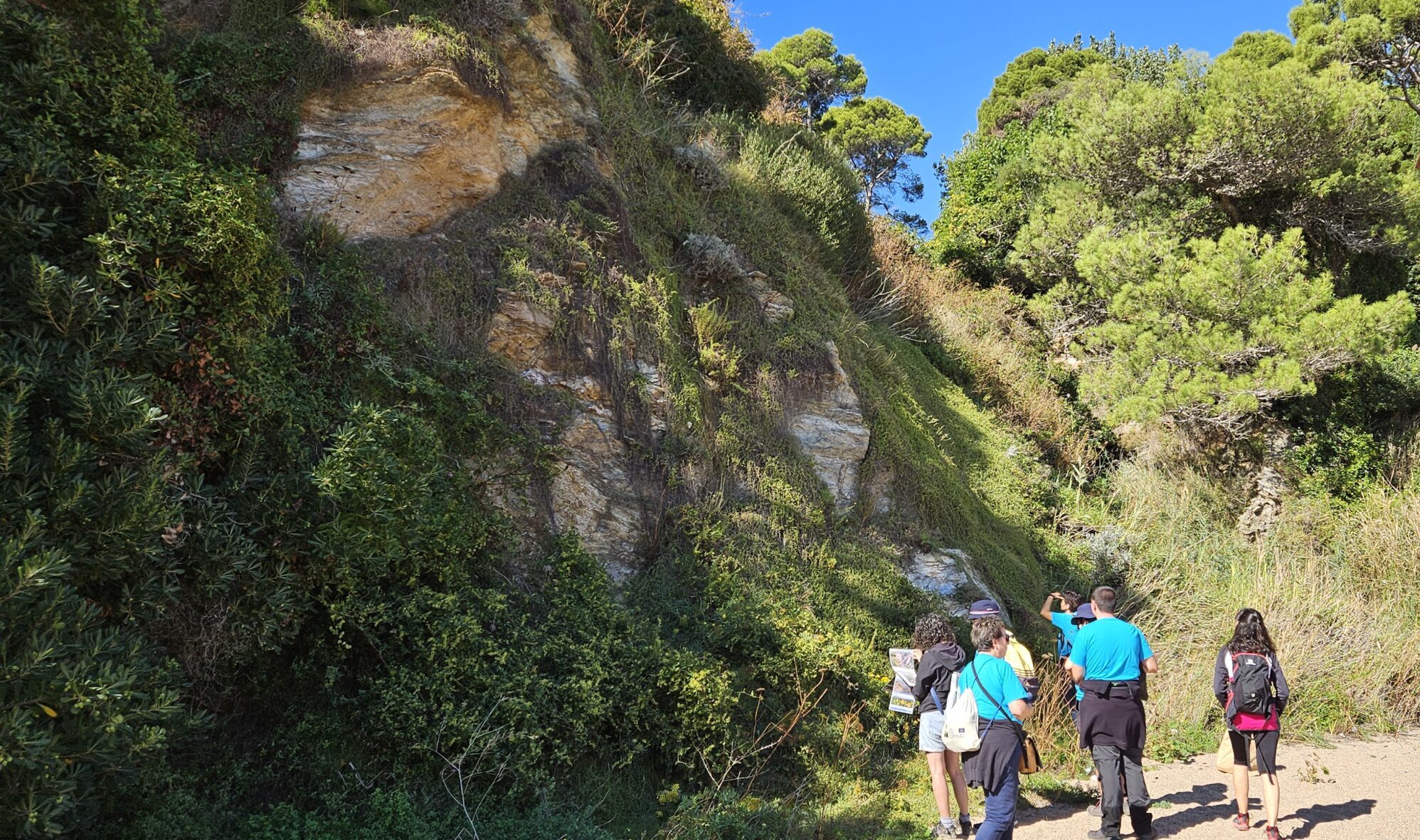
Last Saturday, 28th September, we went on a field trip with the volunteers to visit the transects C26 and C27 on the north side of “Cala Sa Riera” in Begur. The objective was to explain and remind how to gather data on iNaturalist and how to fill in the monitoring forms of the plant populations to the new volunteers, as well as see what species might appear in the route, both autochthonous and allochthonous.
We started from the middle of the C16 transect, right in front of the beach and headed north. At the starting point, we showed one of the major focuses of allochthonous species arrivals to the environment with some cape daisies (Gazania rigens) exemplifying how cultivated plants on a parterre right next to the sand could spread beyond the planted area. We also observed several Mexican petunias, or bluebells, (Ruelia simplex) which seem to be planted often lately. It would be interesting to monitor them.


Parterre in front of the beach with numerous Cape daisy specimens (Gazania rigens) [left] and flowers and leaves of Mexican petunia (Ruelia simplex) from the same parterre [right].
From there, we followed the path across the sand and found some specimens of sea poppies (Glaucium flavum), a common species on our coast. At the same time, while looking at the steep rocky walls, we came across a well-established population of Agave difformis.


Sea poppy (Glaucium flavum) [left] and Agave difformis population with a fruiting individual [right].
As we kept walking we spotted a big and prostrate specimen of Japanese spindle (Evonymus japonicus) with broader leaves, growing and spreading over the sand. Next was a Japanese cheesewood (Pittosporum tobira) with a big prominent bole. Growing on the foot of the cliff we could see a well-developed population of Mediterranean smilax, or sarsaparilla (Smilax aspera) in bloom. Growing above it and covering almost the entire wall we could see a curtain of pale dewplant (Drosanthemum floribundum). During this stop the volunteers were told that in the case of observing a population, covering an extensive area, they should describe it in the note section at the end of the form. As the options provided are ranges of area cover, noticing an increase or decrease can be substantial but difficult to observe from pictures. That is why the role of the volunteer is crucial in describing these changes as they are the real witnesses of the populations’ evolution.



Japanese spindle (Euonymus japonicus) with broad rounded leaves [above]. Sarsaparrilla (Smilax aspera) population [below left] and volunteers observing the rocky wall of the cliff covered in pale dewplant (Drosanthemum floribundum) [below right].
Following the stairs connecting to the “Camí de ronda” we came across a very extensive population of sour fig (Carpobrotus sp.) growing along the way, we could also clearly see their source and how, at some point, they crossed the path and reached the other side. The severed population grows following the slope almost reaching the sea. The volunteers commented on the situation and we stopped to discuss this sort of situation that they may encounter. Split populations that were originally the same but have been divided due to the management of the “camí de ronda” which would have overtaken the entire area if it had not been for the management.

Sour fig plants (Carpobrotus sp.) from a private garden escape through the fence on the left and more specimens on the other side of the path beyond the wall, almost reaching the sea, on the right.
Another important aspect was the stop of the Cape ivy (Senecio angulatus). We saw a few stalks and leaves growing on the wall along the way and climbing an Aleppo pine (Pinus halepensis). However, after that, we spotted the stairs to access the sea and these were covered by the twisting vines of the Cape ivy as were the lower parts of the pine. Even though some sections were cut and managed most of them remained intact.

Cape ivy (Senecio angulatus) coils the branches of an Aleppo pine and spreads beyond the bole.
As the main focus of the LIFE project is to preserve the autochthonous flora of the Mediterranean cliffs which compose the Habitat of Community Interest HCI 1240 we stopped to observe and enjoy some sea-lavenders (Limonium spp.) that were still in bloom, as well as the shrubby everlasting (Helichrysum stoechas) and sea fennels (Crithmum maritimum).


Neus Ibáñez (IBB) shows a late bloomer Limonium sp. specimen growing between the cracks of the rocky wall.
As we walked we kept seeing and talking about the novelties that appeared along the way and checked the state of the different populations like the prickly-pear (Opuntia ficus-indica) affected by the cochineal (Dactylopius opuntiae). The owner of this transect commented that some of the plants we encountered were new to her as she missed them or confused them with other species. This was the case for a purple dewplant (Disphyma crassifolium) which she believed to be a small (Carpobrotussp.) and a Malephora sp. that she did not register as she did not know what it was. Here we highlighted the importance of coming to the volunteers’ field trips. As these trips are organized with LIFE staff, both from IBB and Flora Catalana, it allows the volunteers to ask all the questions they might have and to have more eyes on the field to help report as many observations and changes as possible.



Purple dew plant (Disphyma crassifolium) [left] and Malephora sp. [right] specimens. Prickly-pear plant (Opuntia ficus-indica) affected by the cochineal (Dactylopius opuntiae) especially in the sheltered and shaded areas of the plant [below].
Almost reaching the “cala de l’illa roja” we stopped to observe a population of heart-leaf ice plant (Mesmebryanthemum cordifolium) and concluded the trip with the final photo.
 Grup photo, at the camí de ronda, above l’illa roja.
Grup photo, at the camí de ronda, above l’illa roja.
Once the trip was over we headed to the “pica-pica” assigned zone, as is customary, and talked about the next and last field trip of the year. This will be in Cadaqués, but as the Bioblitz of the “Cap de Creus” will be held on Saturday 19th October and will last the whole day, the trip was rescheduled to the next day, Sunday 20th October.
Text and photographs: Edgard Mestre





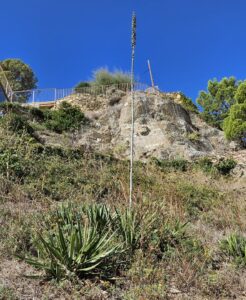
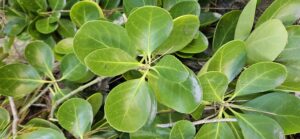
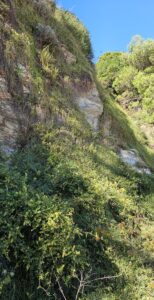
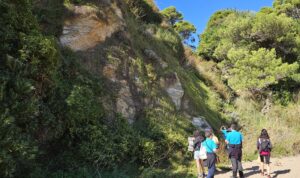


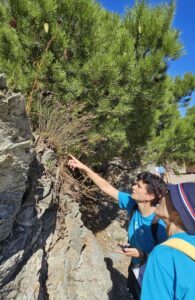
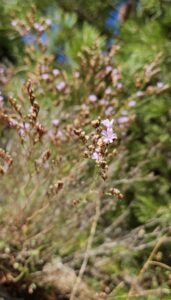
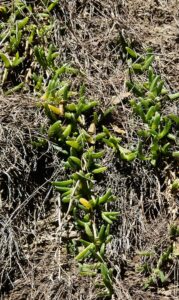
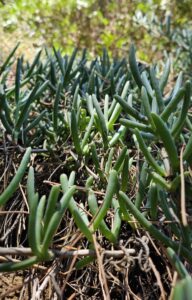
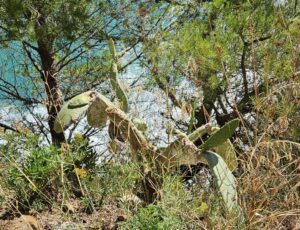
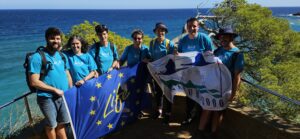 Grup photo, at the camí de ronda, above l’illa roja.
Grup photo, at the camí de ronda, above l’illa roja.
